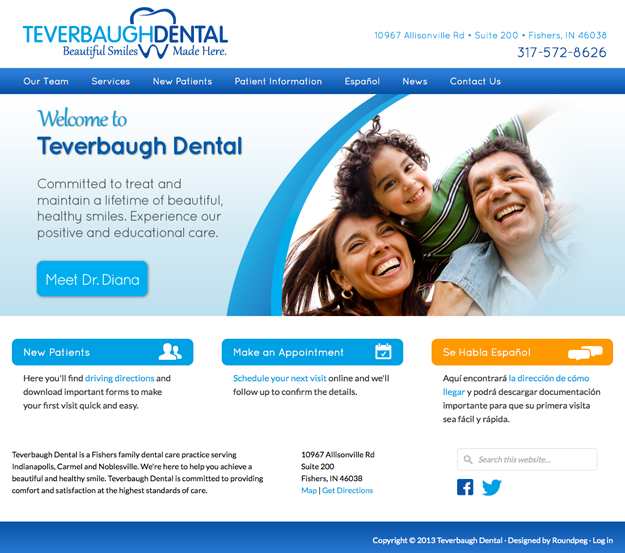Dr. Diana Teverbaugh came to us to build a website for her new family dentistry practice. It was a fairly simple assignment for us, with one exception: Dr. Teverbaugh is bilingual and wanted to focus on the growing Hispanic community. To do that, she envisioned a bilingual site.
One Site or Two?
We discussed the pros and cons and decided the SEO advantages of driving more traffic to the primary website outweighed the benefit of a Spanish welcome on the top of the site. From the menu at the top of the page and a distinctive orange button on the home page we let visitors know she speaks Spanish.
Translation Programs
Next, we tackled the issue of Spanish language content. We quickly rejected the idea. While Google Translate is great to give you a feel for what a foreign language website says, it isn’t good enough to generate content for your website. The translation programs are very literal, with little or no ability to incorporate the nuances that make a language sound human.
If you are going to create a foreign language website and don’t have someone on your staff capable of writing in that language, hire a professional translator. We were fortunate that Dr. Teverbaugh was comfortable writing the content in both languages.
Translate the Whole Experience
If you are going to create a bilingual website, you to be sure you can deliver a complete user experience in both languages. For us, that meant creating two versions of the new patient input forms. While it was easy to simply create a Word document in Spanish, we wanted the interactive form to be in Spanish as well. Fortunately Wufoo has a wonderful translation feature. All we had to do was create the form in English and then use their translation tool to create a Spanish version. Yes, I just finished telling you why you shouldn’t use a translation tool, but this is slightly different. We weren’t creating huge blocks of text, just simple words like “telephone number” and “email address.” Human translators at Wufoo selected those common words and manually translated them.
The translation tool is pretty robust; not only can you create forms in common romance languages like Spanish, French and Italian, the program also adjusts to Hebrew, Russian, and Greek alphabets and Chinese and Japanese symbols. I was amazed at how easy it was to replicate the English form.
This was our first bilingual website, but I have a feeling it won’t be our last. With almost 40 million people in the United States who speak Spanish as a primary language, companies which consider sharing some or all their in formation in both languages will open the door to new sales.

